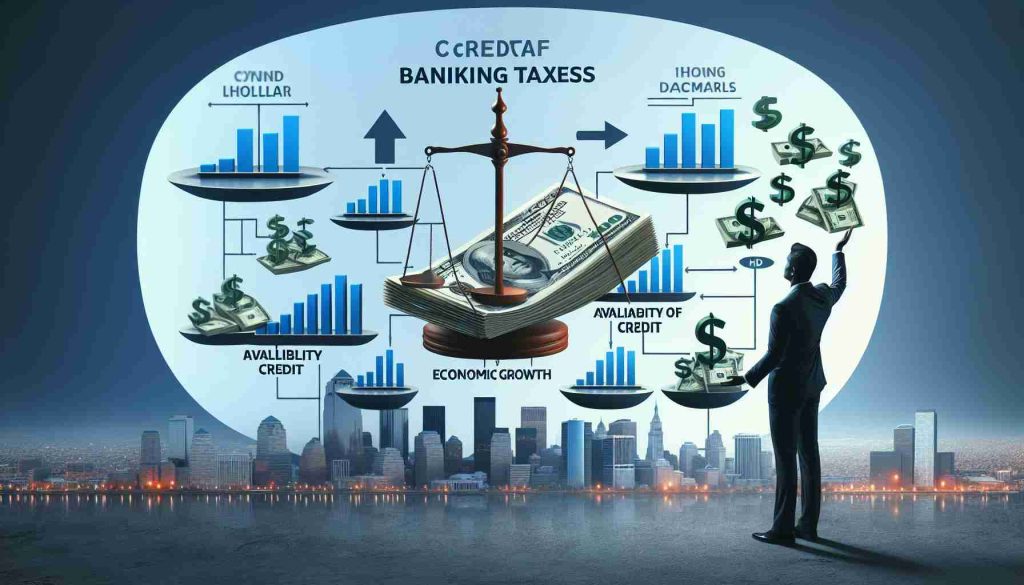In response to government efforts to make permanent a tax on banking “extraordinary profits,” financial institutions are adjusting their strategies, resulting in a significant decrease in lending to businesses and families. Since the inception of this tax measure by the government, lending has dropped by 40.125 billion euros. Data from the Bank of Spain covering late 2022 to August 2024 reveals a substantial reduction in outstanding credit, with business financing decreasing by 24.8 billion euros and mortgage lending falling by 15.8 billion euros.
The overall outstanding credit extended to businesses and families by financial institutions has decreased from 1.174 trillion euros at the end of 2022 to 1.134 trillion euros by August 2024. This represents a notable decline attributed to the taxation policies implemented by the government, indicating a reduction of over 40 billion euros in bank funding to the Spanish economy. Reports from as early as 2022 indicated concerns from affected companies about decreased credit availability due to the tax on “extraordinary profits,” with estimations suggesting up to 50 billion euros in financing could be impacted.
In 2023, the banking tax resulted in 1.695 billion euros in fiscal revenue, and a similar amount is assumed for 2024, bringing the total to 2.825 billion euros. However, during this period, credit availability decreased by 40.125 billion euros, equating to a significant loss in economic support. For every euro collected through this tax, 17 euros in funding for the economy were lost, highlighting the potential negative repercussions of these financial policies on credit availability and economic growth.
Exploring Deeper Impacts: Taxes, Credit Availability, and Economic Growth
As the debate surrounding banking taxes and their effects on credit availability and economic growth continues, it is essential to consider additional facets of this complex issue.
What are the key challenges associated with banking taxes on credit availability and economic growth?
One crucial question that arises is whether the short-term revenue gains from these taxes outweigh the long-term consequences of reduced credit availability. While governments may benefit from increased fiscal revenue in the immediate term, the resulting reduction in lending could hinder businesses’ ability to invest, grow, and create jobs, ultimately impacting economic growth.
Are there any controversies surrounding the implementation of banking taxes?
One contentious aspect is the potential trade-off between fiscal policies aimed at revenue generation and those focused on promoting economic expansion. Critics argue that excessive taxation on banks may stifle lending activity, leading to a contraction in economic output. On the other hand, proponents suggest that such measures are necessary to prevent excessive profit-taking by financial institutions at the expense of broader societal interests.
What are the advantages and disadvantages of taxing banking “extraordinary profits”?
On one hand, taxing banking profits can provide governments with a new revenue stream to fund public services and infrastructure projects. It can also address concerns about income inequality and wealth concentration within the finance sector. However, the drawback lies in the potential adverse effects on credit availability, as demonstrated by the significant decrease in lending following the imposition of such taxes. Balancing these advantages and disadvantages is crucial for policymakers seeking to strike a harmonious equilibrium between revenue generation and economic sustainability.
In navigating the intricate relationship between banking taxes, credit availability, and economic growth, policymakers must weigh the short-term benefits against the longer-term implications. Striking a balance that fosters financial stability while promoting economic dynamism remains a daunting challenge.
For further insights into this topic, you may find valuable information on the World Bank website, where research and reports shed light on global financial policies and their impacts on economic development.










More Stories
Changes in the Tax System for Independent Workers in 2025
Hotelbeds Group Plans IPO to Reduce Debt
New Lottery Draw Report: No Jackpot Winners!